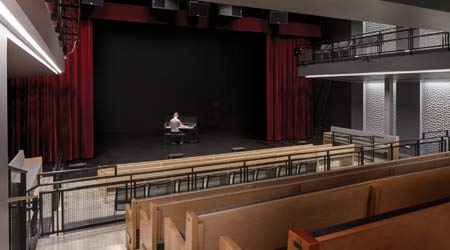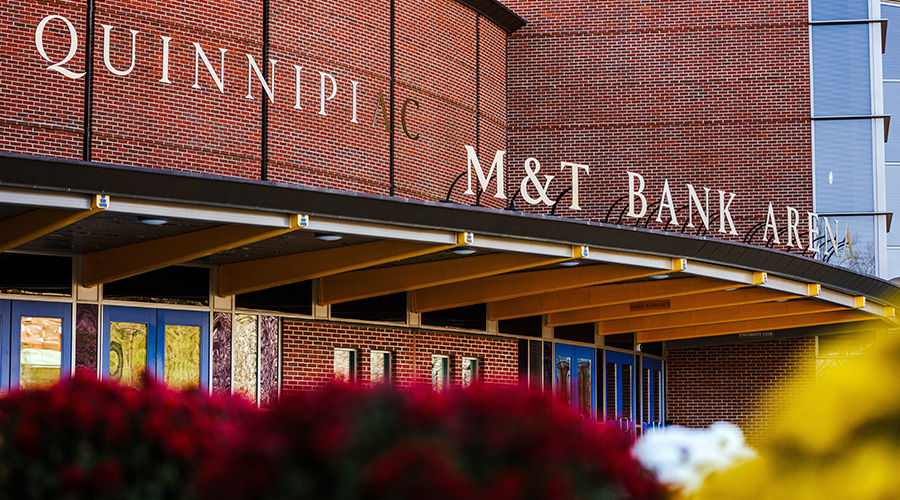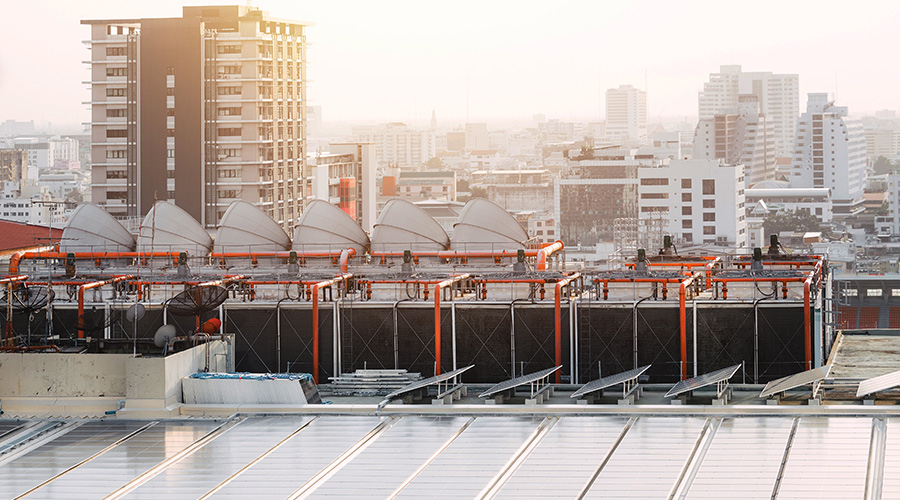 To address the higher latent loads experienced when there’s a full house at the 30,000-square-foot Getz Theater Center at Columbia College in Chicago, a dedicated outdoor air system unit was installed along with the VRF system. Photo credit: © Tom Rossiter | Designed by Gensler
To address the higher latent loads experienced when there’s a full house at the 30,000-square-foot Getz Theater Center at Columbia College in Chicago, a dedicated outdoor air system unit was installed along with the VRF system. Photo credit: © Tom Rossiter | Designed by GenslerUnderstanding Your Variable Refrigerant Flow (VRF) Options
As VRF systems continue to grow in popularity, it's important for facility managers to know the options...and potential energy-saving benefits.
Variable refrigerant flow (VRF) systems are growing in popularity in commercial and institutional buildings, and rightfully so. This energy-efficient HVAC technology is now competitively priced, has fewer limitations, and is supported by more manufacturers than ever before. VRF systems — whether heat pump or heat recovery — are more efficient because they use refrigerant, instead of water or air, to move energy. For example, it takes roughly the same amount of energy to condition a space using a 1.5-inch VRF refrigerant pipe, a 4-inch water pipe, and a 20-by-20-inch air duct. Additionally, a single condensing unit can serve multiple indoor fan coil units, while previously, multiple split systems would have been required for similar applications. Because smaller refrigerant piping is less invasive to install than hot water/chilled water piping and its associated ductwork, VRFs are ideal for retrofit applications where shaft and ceiling space is limited.
When designing a VRF system it’s important to evaluate the design constraints as well as the building’s needs to determine the most energy efficient and cost-effective solution.
Heat pump system
Similar to a traditional two-pipe chilled water/hot water system, the heat pump VRF system works in either heating or cooling mode and needs to be changed over during the shoulder seasons. There are several options for the seasonal changeover including: manual changeover (at the BAS or VRF system controller), external input (could be an outdoor temperature sensor), voting (majority dictates), or master controller (typically in an executive’s office). If an indoor fan coil unit is in the opposite mode to that of which the system is operating, the unit will go into standby until the system is switched over to the congruent mode. It’s worth noting that the VRF system changeover takes 15 to 30 minutes and can happen multiple times per day, whereas a two-pipe water system changeover can sometimes take days.
The heat pump VRF system is ideal for buildings with spaces that have similar uses and can be grouped into zones by exposure. These zones have predictable load profiles so they would never require simultaneous heating and cooling. Also, because two-pipe VRF systems have a lower first installed cost versus their heat recovery counterparts, they are an excellent application for budget-minded owners.
Heat recovery system
The heat recovery VRF system is generally but not always a three-pipe system and requires more infrastructure than the heat pump system, but it can operate in both heating and cooling modes simultaneously. Additionally, in facilities that have zones that require heating at the same time that other zones require cooling, the heat recovery VRF system can recover energy from one zone and transfer it to the other to heat/cool the air. For example, heat generated in an occupied conference room that is in cooling mode can be transferred to one of the building’s exterior zones that is in heating mode.
To reduce energy consumption, the VRF system at the Getz Theater Center at Columbia College in Chicago was designed as a heat-recovery system. With units serving the north perimeter of the building on one VRF zone, and units serving the south side on another, heat can be transferred from the latter zone to meet the needs of the former.
This potential for energy transfer necessitates additional components, including piping, valves, and branch controllers/boxes to control the transfer of energy. As in the two-pipe heat pump system, all heat recovery system components are controlled at the BAS, or the VRF manufacturer’s stand-alone interface. Because of the additional system components required, the heat recovery VRF system has a higher first installed cost, approximately 20 to 30 percent more, than the heat pump system.
The heat recovery VRF system is ideal for facilities with large footprints, where the perimeter might require heat, while the interior is in cooling mode, or for buildings with high interior occupancy loads, such as assembly rooms. Heat recovery is also great for high-end residences or hotels where occupant comfort and controllability are top priorities.
Related Topics:















